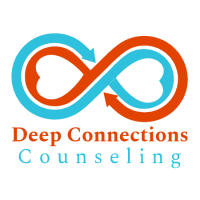How to find yourself in the present moment fully amidst the chaos of daily life? Check out 3 techniques to better understand yourself, connect with your surroundings, and truly enjoy life.
What is the most full memory in your mind right now? It might be when you got married. It might be your graduation. Or the day you gave birth to your children.
Whatever it is, how did you feel during that moment?
Like, how did you really feel?
What kinds of sensations traversed your mental conscience? What about your physical conscience?
Did you tingle from excitement and energy? Did you feel the warmness of gratitude coursing through your body?
Let’s get noticing
How did it feel to hold that diploma in your hand? You might have noticed a feeling of reassurement knowing that the hard work of the past four years had fnally paid off. You might have noticed that feelings were invoked of doubt and fear about having to transition into the “real world”. You probably noticed that you were proud of yourself, acknowledging that you had decided to give yourself a real education, paving the way to becoming a valued member of society?
That newborn baby in your arms after hours of aching contractions? As you held your new baby boy or girl in your arms, oxytocin overfowing into your system, stimulating your parental instincts, how did your heart feel? Did it feel deep gratitude? Did it feel exaggerated? Like it was being infated by the sight of this precious child to the point of bursting? Did it feel light like a helium balloon, riding high on this feeling of elation?
If these specifc experiences don’t mean much to you, that is 100% okay! The point of this exercise is not to recall specifc moments that may or may not have happened to you. Rather, it is to illustrate what it means to find yourself in the present.
Before you get confused: no, being present does not mean feelings of exhilaration and milestone-like highs. It means looking into yourself as a being capable of feeling and determining what you feel in your mind and the physical tangible effects that it manifests on your body.
It would be just as effective if I posed this thought experiment instead:
Do you remember when you were frst rejected by your crush (if not, you can click off the page, Michael B. Jordan)? In the moment, how did you feel? More specifically, you could have noticed your heart drop. Could you feel the beat of your heart drumming out of your esophagus? Did you feel your head start to get warmer and more fustered? Maybe your arms and legs became noodly and thoughts started to not make any sense as if your whole world were catastrophizing down.
It is in these moments, good or bad, that you find yourself in the present moment fully, because your brains is wired to want to remember these signifcant moments to learn from them.
While learning from your past is important, arguably the most important reason why we are present with ourselves is because it greatly improves our well-being by allowing us to understand our own emotions and thinking processes better, improving our empathy, and allowing us to process and deal with emotions and signifcant events in a healthier way.
We will learn soon how suppressing or ignoring our emotions during signifcant life events can cause traumatic damage to our psyche and our mental well-being.
The practice of becoming more in tune with your present self is called being mindful.
Mindfulness improves well-being
From a biological perspective
When we come across everyday situations, our senses are sent to the hippocampus as short term memory, the information is processed, and if the brain deems it important, the new data will be integrated with other pieces of data in the cerebral cortex; this constitutes a memory.
1. It allows us to deal with traumas and stressors in a greater capacity
Current research in neurobiology shows that when exposed to very stressful events, human brains may bypass the processing in the hippocampus completely in order to save the psyche from dealing with hyper-traumatic stresses and package it away as a “hidden memory”. These unprocessed hidden memories and the emotions that come with this unprocessed event can then be “triggered” by anything that is associated with the hidden memory, forcing the person to have to live through the traumatic experience over again (this may be referred to as a “fashback”).
By focusing to find yourself in the present, you are better able to process these stressful events so that you may:
- Deal with stressful events in a healthy manner
- Prevent future relapses of internalized emotions
- Learn from the event, building character and life experience
From a psychological perspective
Part of being mindful is acknowledging the emotions and thoughts that you feel and think, not treating them with avoidance or aversion. Thus, through mindfulness, we gain acceptance to our experiences, learning to relate to the irrationality, irritability, and self-deprecating thoughts rather than distancing ourselves from our own emotions. It is from this newly formed connection with our feelings and sensations that we become more present, understand our own emotions better, and avoid forming maladaptive and irrational behaviors.
2. It improves our physical health
The mind and the body are connected in an extremely intricate and uniquely collaborative fashion. It is almost as if there is a sort of “conversation” between your mental state and your physical health. A pitfall in mental health has strong correlations with a weakened physical state.
When your body senses something it should be alerted about, it releases hormones. These hormones are called “stress hormones” and give us the ability to respond efciently to stress. In a stressful moment, it makes us run faster, signals our heart to beat faster, and hypersensitizes us to react more aggressively to future stimuli.
However, in the long run, these stress hormones can cause some serious damage.
“In more serious cases, stress may cause a decrease in blood fow and oxygen to the stomach, which could lead to cramping, infammation, or an imbalance of gut bacteria. It can also exacerbate gastrointestinal disorders, including irritable bowel syndrome, infammatory bowel disease, ulcers, and GERD” (Iliades 2018).
“Your body produces a surge of hormones when you’re in a stressful situation. These hormones temporarily increase your blood pressure by causing your heart to beat faster and your blood vessels to narrow. Reacting to stress in unhealthy ways can increase your risk of high blood pressure, heart attacks, and strokes” (Mayo Clinic n.d).
“When we’re stressed, the immune system’s ability to fght off antigens is reduced. That is why we are more susceptible to infections. The stress hormone corticosteroid can suppress the effectiveness of the immune system” (McLeod 2010).
It may be important to note here that there may currently be no evidence these conditions are directly linked to stress itself. It is the hormones that are produced during stressful events that may damage arteries, which may lead to heart disease (Mayo Clinic n.d).
This does not mean, however, that you should avoid feeling stressed. Stress hormones are natural and necessary for the body. Feeling stressed now and then will likely not cause damage. It is the future relapses of unprocessed or negatively processed stresses that perpetuate more stress that then releases more stress hormones into your bloodstream.
The hormones released from a one time stressful event will likely not result in damage. Therefore, it is okay to be in a stressful situation. It is okay to be stressed. It is better to deal with these stresses now, however, rather than letting them cause more stress later.
Integrating this new information with what was mentioned above, we can now clearly see how dealing with stressful events in a healthy way is so important. When you find yourself in the present moment, you can handle emotions healthily and prevent future relapses of internalized emotions.
The most effective natural advice a professional can give you is to decrease your stress. Because you cannot control the external stressors in your life, the best thing you can do is to react healthily to present stress so that your future self does not have to gain more stress from unprocessed past stresses.
3. It improves our mental health
All of this to say that these benefts of being more present and dealing with life as it comes has become an important tool that psychotherapists use to treat their patients in a wide range of mental health problems: depression, anxiety, eating disorders, substance abuse, etc.
How to be more mindful and to find yourself in the present
Let’s start with the general goal of mindfulness practices.
Almost any mindfulness practitioner will tell you that the primary goal of practicing mindfulness is to achieve a state of hyper-focused relaxation.
What does this mean? It may seem like an oxymoron, like jumbo shrimp or silent scream or love hate. Let’s look at some techniques that might show us what it means to be in a hyper-focused relaxed state.
Technique #1: Full Body Scan
This technique is a quick, easy process that can take as little as 5 minutes to do. Doing a full body scan frst thing in the morning can set your day off right by giving yourself a mindfulness base point that you can reach back to at any time in the day when you may feel stressed or overwhelmed.
First, start off by sitting up, making sure your back is straight so that you can get a few full deep breaths in. You can lay down or sit up, but if you are doing this as you wake up in the morning, it may be difcult to find yourself in the present and practice mindfulness while laying down in your bed without falling back asleep.
Next, take a few deep breaths to center your attention on your body. Notice how your body feels with each breath in and each breath out. When you feel centered with your body, start the scan.
To begin the scan, start at the tip top of your head. With your eyes closed, begin to notice that area of your body. Try to notice these things
- How it feels to notice that area
- The sensations you may feel in that part of your body
- With every breath in and out, how does that area feel in response to a new breath of life? As you begin to feel more connected with the tip top of your head, you can start to move downwards to the next area of your body, noticing the same things about this next part of your body.
Move down your body, eventually reaching the soles of your feet. As you fnish this exercise, you will feel more connected with your body, as you now have a better grasp on the sensations of your body, both externally and in the inner workings.
Technique #2: Mindful Breathing
This is among the most commonly used forms of meditation, as it is very effective to find yourself in the present momento. It can take as long as you would like: anywhere from 5 minutes to an hour or more!
As the name states, this exercise focuses primarily on the breath. The intake. The outbreath. During these frst few breaths, watch the way your body takes in these breaths. Internalize your focus onto how it feels to fll your lungs with air.
As your diaphragm moves to take in air, you might notice that your stomach expands outwards.
As your diaphragm moves to push out air, you might notice your stomach moving inwards.
You might notice your shoulders shift as your lungs balloon upwards, pushing your shoulders out and up; and as your lungs contract to push the air out, the shoulders fall nicely back into place.
I personally can’t help to notice the incomparable feeling of air passing through the airway onto the way into and out of the lungs. I focus on the way my head, neck, and upper shoulders refreshingly tingle with each inbreath and the way my body resets into its resting position as the breath exits my body.
This is the frst part of this exercise; it centers our focus on one thing: the breath. The second part is just as important; it guides us through what we should do if and when we get distracted or sidetracked from our breathing.
Dealing with distracting thoughts while meditating
It is almost impossible (especially for beginners) to fully focus on the breath for an extended period of time because we do not meditate in a vacuum. We have distracting thoughts. The environment around us may be full of extraneous sounds, lights, and smells that may take us out of the hyper-focused state we may wish to stay in.
When I began my meditative journey, this was the biggest problem that I saw as roadblocks to my progress. I kept getting distracted by my inner thoughts. I would get frustrated with myself for getting distracted, then I would get frustrated at myself for getting frustrated with myself.
But after reading and learning more about the meditative process, I soon realized that distractions are not only unavoidable, but a part of the present-minded process.
When a distracting thought comes up, beginners may try and intentionally ignore the thought. It seems, though, that doing this is actually detrimental to increasing our focus. Trying to purposefully ignore a thought requires attention. Just like how if I write “don’t think about donuts”, you’re probably getting distracted about not thinking about donuts.
Rather, embrace the extraneous thought. Identify what the thought consists of and acknowledge it. Think “okay this is what my brain is telling me right now”, then release it into the infnite pool of thoughts.
Many meditation practitioners/teachers like to use this analogy: imagine yourself on a hill, on top of which you overlook a road. Cars come and cars leave. Your point of view represents your focus and the cars represent thoughts. Every now and then, a car (thought) will pass through your point of view (focus). Rather than pretending that the car (thought) was never there, acknowledge the car (thought) and subsequently, let it pass, not trying to hold on to it, but also not trying to prevent it from coming into your point of view.
I prefer to employ a different, yet practically similar method in viewing distractions. When a thought pervades my focus, frst, I acknowledge the thought. I see what the thought consists of and recognize that my brain has presented it to my conscience. I then picture a bubble forming around the thought and watch as the bubble, along with the thought, foats out of my consciousness. This allows me to address the distractions that arise in my mind while visualizing it leaving my consciousness.
Understanding your emotions
An equally important meditative task is ensuring that you are not only keeping track of your physical and mental state, but also of your emotional sensations as well. When an emotion is surfaced, treat it as a thought.
You may be thinking “Emotions and thoughts are two different things. Why should I give emotions the same type of attention as a thought?”
In reality, yes, emotions and thoughts are two separate entities that make up a large portion of our conscience. However, in terms of understanding the impermanence of conscience, a very important when you find yourself in the present, they should be treated as equals. Both represent something that the mind is wishing to refer to our consciences.
Therefore, when an emotion bubbles up to your consciousness, turn towards it, rather than away. Acknowledge it and allow it to exist. Examine how the emotion translates to physical sensations in your body. If you feel a rush of anxiety, how does it affect you? Does your heart start to beat faster? Does your breathing start to stumble?
Technique #3: A Mindful Walk
Meditation and mindfulness practices are often portrayed as a person sitting cross-legged and eyes closed in the center of a quiet room surrounded with candles. While this is an effective setting to gain an insight into your present body, it is not necessary. If you are a person who really appreciates nature and fnds it easier to center him/herself onto the present in the outdoors, then this may be for you.
To find yourself in the present, leave your phone and start walking outside. As you walk, do the same things as you would meditating sitting down. Take the breaths in and listen to how your body responds to the refreshing substance of life. Examine your emotions and acknowledge your thoughts.
When you find yourself present in the outdoors that you can acknowledge and subsequently listen to your body’s response elicited by the factor. For example, if there are birds chirping, how, if at all, does your body react to it?
Is the temperature different from room temp? If so, how does this temperature affect your emotions? How does this temperature make your body physically feel? For me personally, humidity brings out a bit of grogginess to my emotional template.
One disadvantage you may fnd is that yes, there will be more distractions to take you out of present moment awareness. But if you are able to take those external stimuli and intentionally use them to gain a clearer insight into your psyche (e.g the birds and the temperature), then being present outdoors may actually be better for you.
You can do it! Start to find yourself in the present
Your brain and body are interconnected in ways that will not be understood for centuries to come, but what we do know is that they infuence each other in phenomenally specifc and predictable ways. Having a healthy body is made so much easier with a healthy mind and vice versa, being connected with your bodily sensations allows for a more stable and strong mind.
When the Buddha and the great social psychologist Abraham Maslow agree on something, it might be benefcial to take it importantly and seriously.
- “Do not dwell in the past, do not dream of the future, concentrate the mind on the present moment.” – Buddha
- “The ability to be in the present moment is a major component of mental wellness.” – Abraham Maslow
It is okay to get help. Present Minded Awareness can be hard.
As we go through life, we will encounter challenges that we have never faced before. New emotions and thoughts may breach our conscience and invoke feelings that push us out of our comfort zones. While meditation is about leaning into those feelings in order to understand them and ourselves better, it may undoubtedly be difcult to do so. If you come to a point in your meditation journey where you get frustrated by a plateau in progress, get troubled by distractions, or concerned about your mental and physical health, let us help.
Here at Deep Connections Counseling, we are specifcally trained in helping our clients achieve the state of hyper-aware relaxation that we may wish to achieve. Call us at (757) 704-5558 or visit us at https://deepconnectionscounseling.com/ to schedule your appointment.

Kinga Gudor, PhD
Kinga is a Licensed Clinical Social Worker (LCSW) with more than 15 years of experience. She specializes in couples therapy and working with individuals from a multicultural background.











